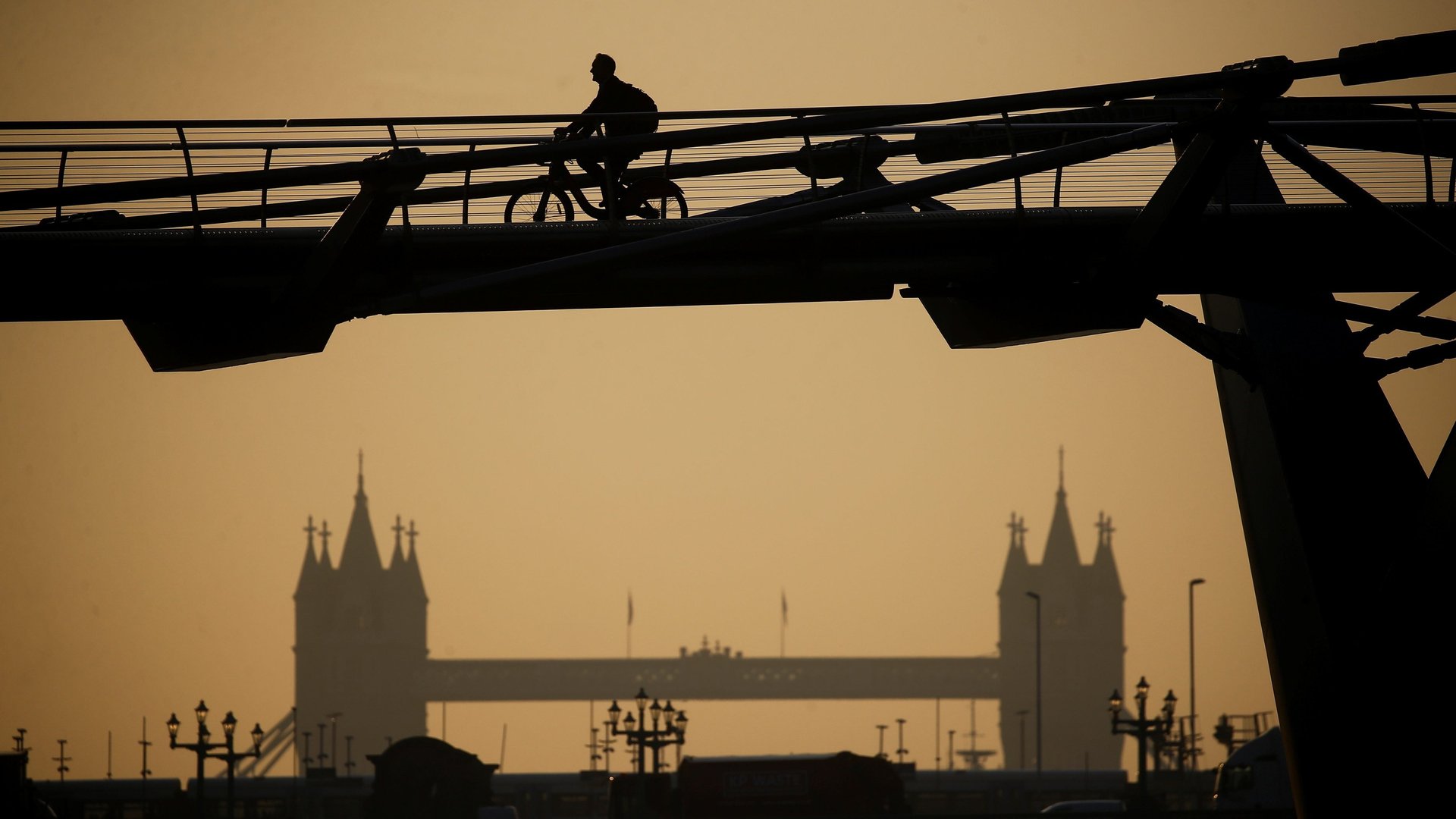The UK’s pathway to net zero carbon emissions is about to get harder
In 1990, as UK prime minister Margaret Thatcher was about to leave office, the economy was slipping into recession and construction workers on the Channel Tunnel had just reached the shores of France.


In 1990, as UK prime minister Margaret Thatcher was about to leave office, the economy was slipping into recession and construction workers on the Channel Tunnel had just reached the shores of France.
At the time, the country was emitting about 794 million metric tons of greenhouse gases per year. Thirty years later, emissions are less than half that level, according to a new analysis, putting the country well on its way to reaching its legally-binding target of net zero emissions by 2050.
The UK’s progress puts its well ahead of other major emitters with similar goals—Germany is 35% of the way there, and in the US emissions are about equal to where they were in 1990. China’s emissions aren’t likely to peak before 2030. In fact, the last time the UK’s emissions were this low was in 1879, when the county was at war in modern-day South Africa, based on an analysis by the UK climate policy analysis group Carbon Brief.

But this progress could soon be reversed. With the economy poised to recover from the pandemic, and many of the lowest-cost carbon-cutting strategies exhausted, the second half of the UK’s emissions reductions will be harder to kick than the first.
Carbon Brief’s analysis points to a few key trends. The first is cleaner electricity. Since 1990—the year the UK designated as its baseline—coal has gone from providing two-thirds of the country’s power to less than 2%, Carbon Brief found. Another key driver was improved efficiency and pollution controls for factories, landfills, and other industrial sources of emissions. And, as the country has replaced coal in the power sector with natural gas, it has gotten better over time at cracking down on methane leaks from gas plants and pipelines (it didn’t hurt that 2020 was an unusually warm year, thus reducing demand for gas-fed home heating).
Notwithstanding those positive long-term trends, what really pushed the UK over the halfway mark in 2020 was the sudden and temporary drop in oil demand due to the pandemic. Vehicle miles—the top emissions source representing one-quarter of the country’s total— plummeted last year. Once travel rebounds, emissions will likely jump as well. Uptake of electric vehicles has been slow, Carbon Brief notes, with less than 1% of UK cars being EVs. Buildings, too, remain a fossil-intensive sector, with a majority reliant on gas for heating.
In other words, the UK has done a good job of cleaning up the electricity sector, but is now stuck with its carbon-heavy stock of existing buildings and vehicles, which will take many years to phase out, and require expensive retrofits. It will also require the country to dramatically increase its overall supply of electricity without reverting to dirty fuels. The government seems aware of the challenge: On Mar. 17 it announced a plan to spend $1.3 billion on green building retrofits, $238 million to reduce emissions from heavy industry, and at least $139 million to research and commercialize carbon removal technologies— all the emissions that remain the hardest to cut.